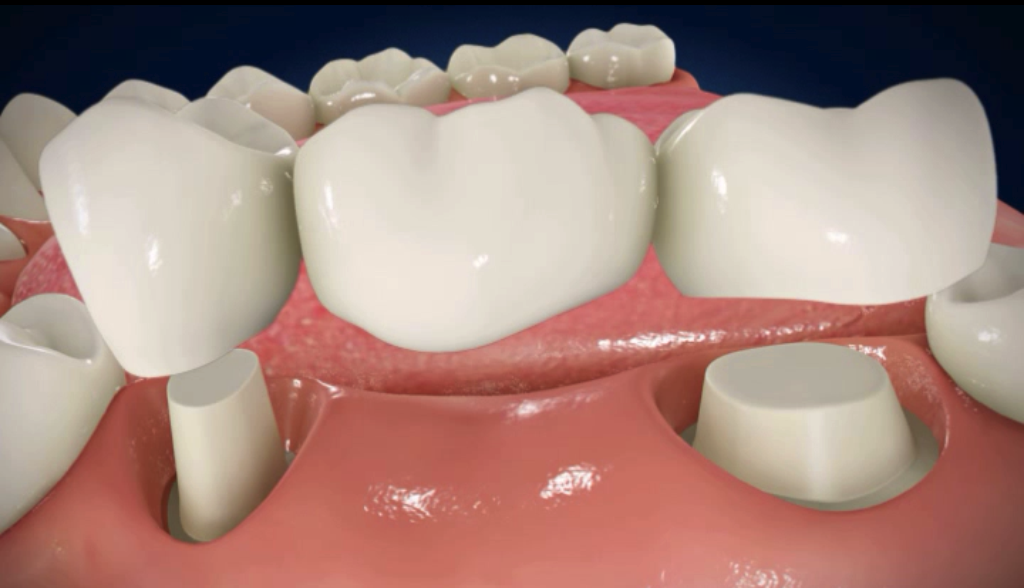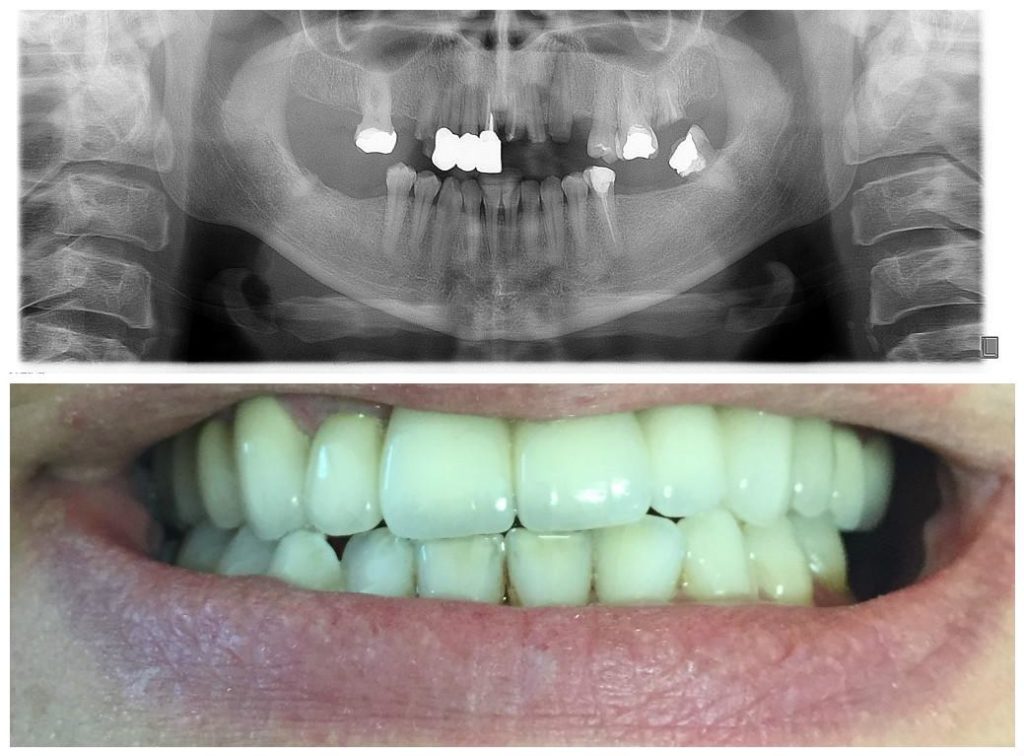DENTAL BRIDGES
Bridges can be made out of any material used for making dental crowns. Clinical examination is necessary for determining the perfect restorative solution for you.
A healthy smile greatly contributes to improving the quality of life.
Each material has its indication as to why it needs to be chosen for a particular case.

WHAT IS A DENTAL BRIDGE?
A bridge is a dental restoration consisting of two or more joined crowns. Tooth loss causes changes to the remaining alveolar bone (residual ridge resorption) and to the teeth surrounding the toothless gap.
Teeth have the tendency to move and lean into the toothless gap, thus ruining the physiological occlusion, face structure, smile appearance and efficient mastication.
One of the solutions for restoring one or more missing teeth is placing dental bridges. Unlike dentures, bridges are cemented onto reduced teeth and cannot be removed.
The crucial prerequisite for bridge placement is the health of the patient’s teeth, which will serve as bridge carriers.

Rehabilitation of the upper jaw using a metal-ceramic bridge – after endodontic treatment and tooth extraction, prosthetic fiber posts are placed and a metal-ceramic bridge is fixed onto them.
Benefits of bridges compared to dentures:
Closely fixed onto reduced teeth (no looseness or possibility of moving)
Masticatory forces focused onto teeth, rather than the surrounding tissues
No speech impairment as they are limited to the space naturally occupied by teeth
The taste and feel of food are preserved (the restoration does not cover the palate)
The patient adapts to the restoration quickly
Reduced teeth are protected from tooth decay
Outstanding esthetic effect
Extremely comfortable, like having your own teeth
All functions (speech, mastication, esthetics) stay intact











